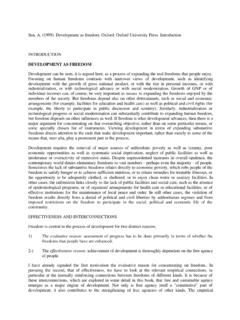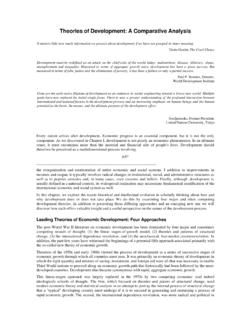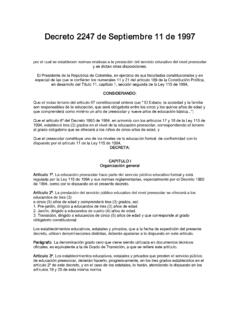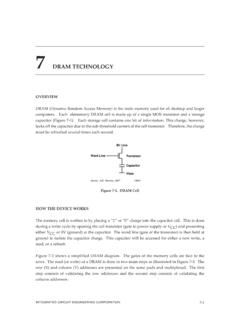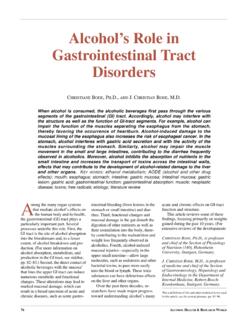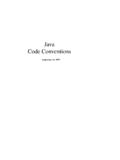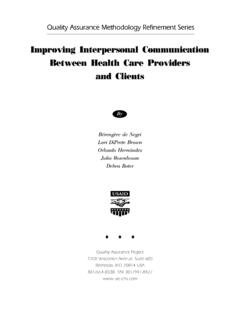Transcription of Theory of transactional distance - c3l.uni-oldenburg.de
1 Moore, M. " Theory of transactional distance ." Keegan, D., ed. "Theoretical Principles of distance education (1997),Routledge, pp. of transactional distanceMichael G. MooreTRANSACTIONAL DISTANCEThe first attempt in English to define distance education and to articulate a Theory appeared in 1972. Later this wascalled the Theory of transactional distance . What was stated in that first Theory is that ' distance education is notsimply a geographic separation of learners and teachers, but, more importantly, is a pedagogical concept. It is aconcept describing the universe of teacher-learner relationships that exist when learners and instructors are separatedby space and/ or by time.
2 This universe of relationships can be ordered into a typology that is shaped around themost elementary constructs of the field - namely, the structure of instructional programmes, the interaction betweenlearners and teachers, and the nature and degree of self-directedness of the concept of transaction. is derived from Dewey (Dewey and Bentley 1949). As explained by Boyd and Apps(1980: 5) it 'connotes the interplay among the environment, the individuals and the patterns of behaviors in asituation'. The transaction that we call distance education occurs between teachers and learners in an environmenthaving the special characteristic of separation of teachers from learners.
3 This separation leads to special patterns oflearner and teacher behaviours. It is the separation of learners and teachers that profoundly affects both teachingand learning. With separation there is a psychological and communications space to be crossed, a space of potentialmisunderstanding between the inputs of instructor and those of the learner. It is this psychological andcommunications space that is the transactional and communications spaces between any one learner and that person's instructor are never exactlythe same. In other words, transactional distance is a continuous rather than a discrete variable, a relative rather thanan absolute term.
4 It has been pointed out (by Rumble 1986, for example) that in any educational programme, even inface-to-face education , there is some transactional distance . Seen in this way, distance education is a subset of theuniverse of education , and distance educators can draw on, and contribute to, the Theory and practice of conventionaleducation. Nevertheless, in what we normally refer to as distance education , the separation of teacher and learner issufficiently significant that the special teaching-learning strategies and techniques they use can be identified asdistinguishing characteristics of this family of educational though there are clearly recognizable patterns, there is also enormous variation in these strategies andtechniques and in the behaviour of teachers and learners.
5 This is another way of saying that within the family ofdistance education programmes there are many different degrees of transactional distance . It cannot be emphasizedtoo strongly that transactional distance is a relative rather than an absolute variable. 'Me whole point and purpose ofdistance education Theory is to summarize the different relationships and strength of relationship among and betweenthese variables that make up transactional distance , especially the behaviours of teachers and learners. (It should bepointed out that other variables exist in 'the environment, the individuals and the patterns of behaviors' besides thoseof teaching and learning.)
6 This means there is room for more than one Theory . There is need for a Theory of distanceeducation administration; a Theory of distance education history; a Theory of distance learner motivation and so example of distance learner motivation also points out that some theories, such as the Theory of transactionaldistance, are more global than others, and that room exists for more finely focused, molecular Theory within theframework provided by a more molar Theory .)The special teaching procedures fall into two clusters; in addition a third cluster of variables describes thebehaviours of learners.
7 The extent of transactional distance in an educational programme is a function of these threesets of variables. These are not technological or communications variables, but variables in teaching and in learningand in the interaction of teaching and learning. These clusters of variables are named Dialogue, Structure, andLearner DIALOGUED ialogue is developed by teachers and learners in the course of the interactions that occur when one gives instructionand the others respond. The concepts of dialogue and interaction are very similar, and indeed are sometimes usedsynonymously. However, an important distinction can be made.
8 The term 'dialogue' is used to describe aninteraction or series of interactions having positive qualities that other interactions might not have. A dialogue ispurposeful, constructive and valued by each party. Each party in a dialogue is a respectful and active listener; each isa contributor, and builds on the contributions of the other party or parties. There can be negative or neutralinteractions; the term 'dialogue' is reserved for positive interactions, with value placed on the synergistic nature of therelationship of the parties involved. The direction of the dialogue in an educational relationship is towards theimproved understanding of the dialogue occurs its extent and nature is determined by the educational philosophy of the individual or groupresponsible for the design of the course, by the personalities of teacher and learner, by the subject-matter of thecourse, and by environmental factors.
9 One of the most important of the environmental factors - and the one thatusually gets most attention from persons both inside and outside distance education - is the medium ofcommunication. As the distance education field matures it is to be hoped that greater attention will be paid tovariables besides the communication media, especially design of courses and the selection and training of instructorsand the learning styles of mediaIt is obvious that the nature of each communications medium has a direct impact on the extent and quality ofdialogue between instructors and learners.
10 For example, an educational programme in which communicationbetween teacher and learner is solely by one-way television, an audiotape, or a teach-yourself book, will have noteacher-learner dialogue simply because these media cannot carry messages back from the learner to the usually make internal responses to what is communicated on the one-way medium, but they are not able tomake their personal individual responses to the teacher. By comparison, a student taught by correspondence throughthe mail is able to have two-way interaction and therefore dialogue with the teacher, though the medium slows downthe interaction.
